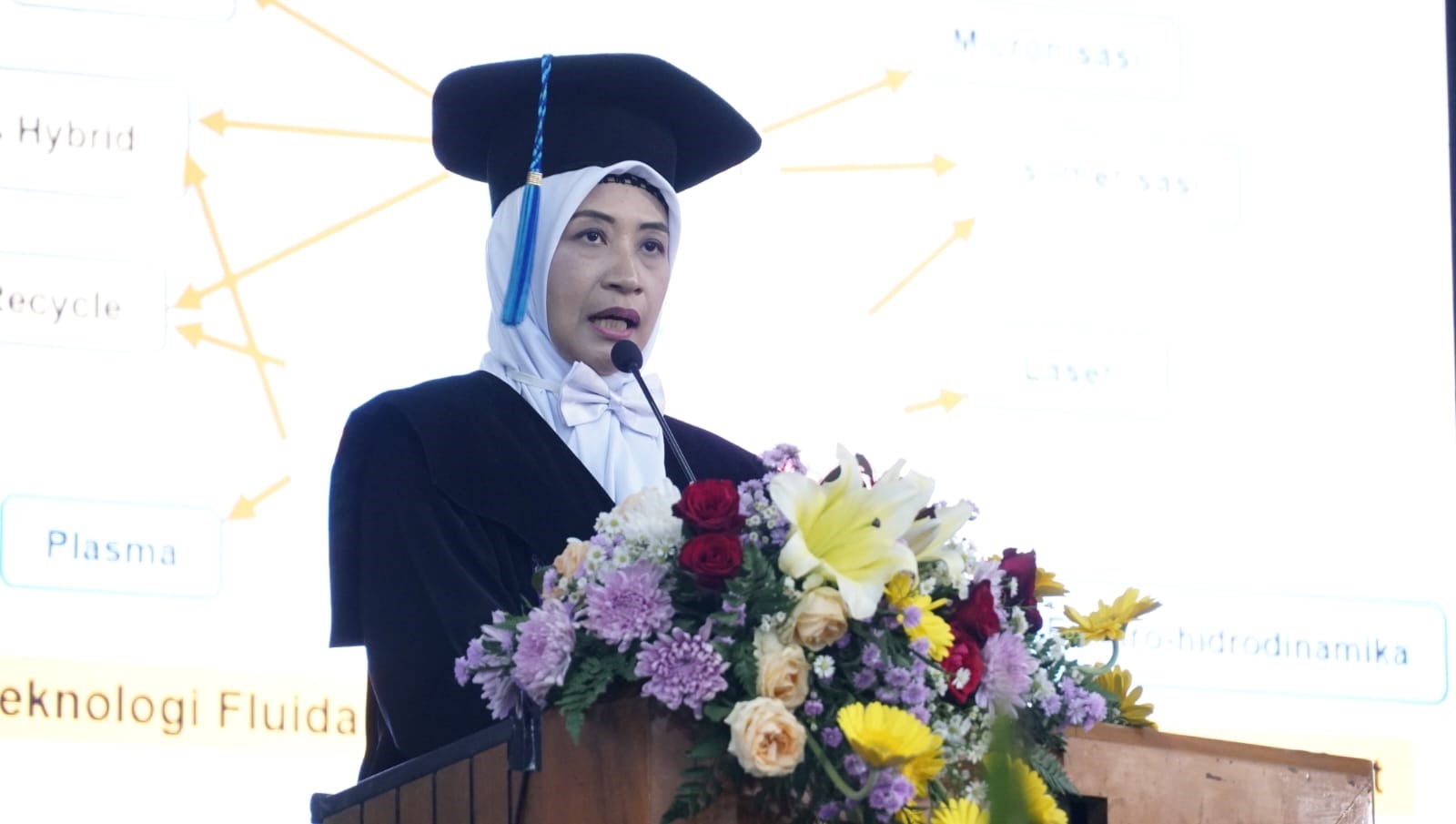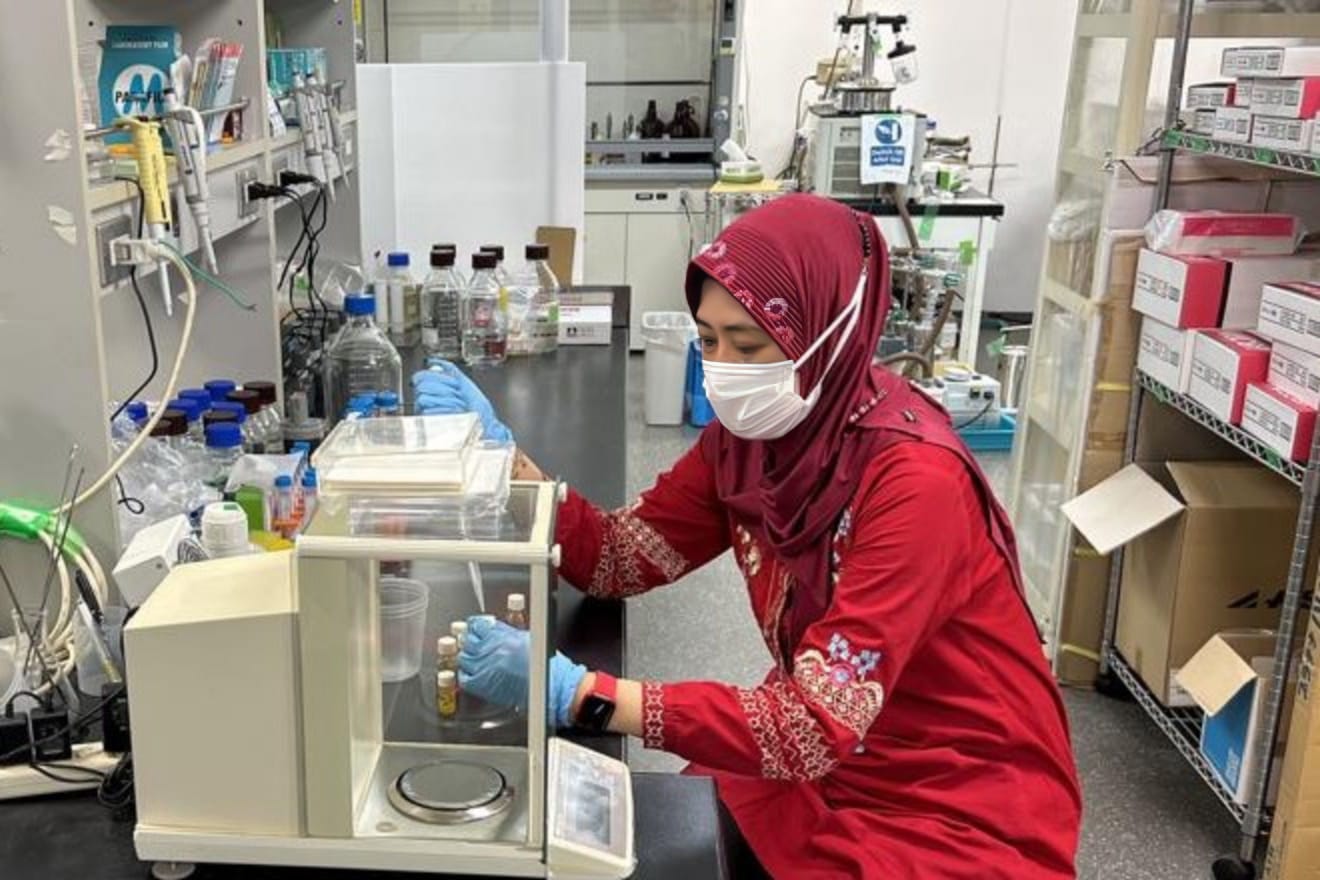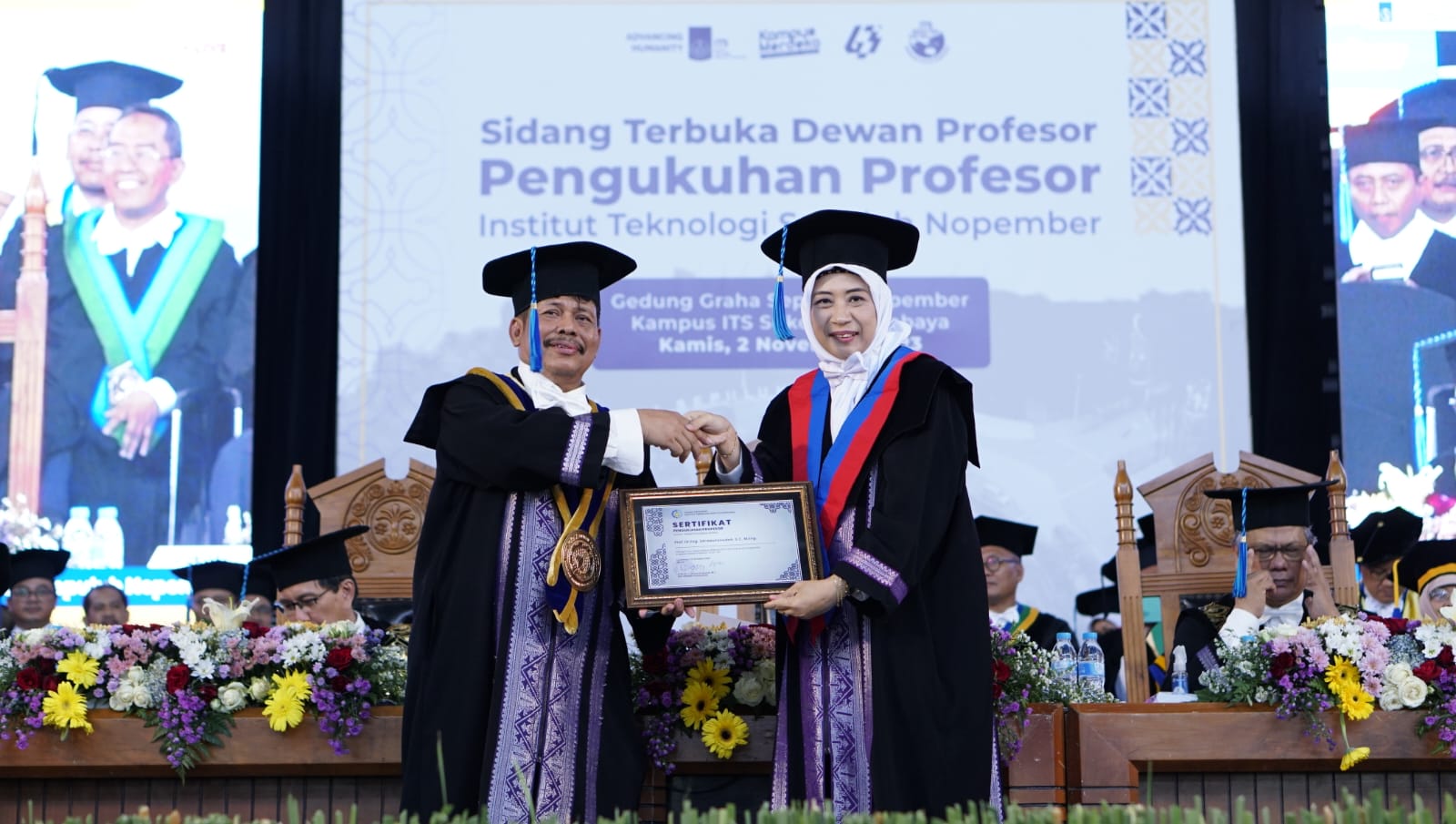ITS Professor Develops Supercritical Fluid as Medicine Raw Material

Prof Dr Eng Siti Machmudah ST MEng when delivering her scientific oration about supercritical fluid at the ITS Professorial Inauguration procession
ITS Campus, ITS News – The use of organic compounds in the dissolution process of medicinal raw materials can pollute the surrounding environment. To overcome this problem, the 178th Professor of the Institut Teknologi Sepuluh Nopember (ITS) Professor Dr Eng Siti Machmudah B.Eng, M.Eng developed supercritical fluid technology as a medicinal raw material by processing herbal plants.
Through her scientific oration, the woman who is familiarly called Mach said that currently the raw materials for medicines in Indonesia are still dominated by imported products. Therefore, she made innovations in supercritical fluid in order to encourage the independence of medicinal raw materials in Indonesia. “In addition, the use of supercritical fluid technology can also be a solution to environmental problems,” he explained.
Furthermore, Mach explained that supercritical fluid is a compound that has exceeded its critical pressure point and critical temperature. This fluid, which has combined liquid and gas properties, functions as a pure solvent or medium for reaction or material separation processes. “Supercritical fluid can replace organic solvents in the separation process, so that the results obtained do not pollute the environment,” said the Professor of the Department of Chemical Engineering ITS.
In his process, Mach chose to use supercritical carbon dioxide (CO2) and subcritical water as compounds for his research. Both fluids were chosen because they are easy to obtain, non-toxic, and non-flammable. In addition, the use of CO2 can also reduce greenhouse gas emissions that trigger global warming.

Prof Dr Eng Siti Machmudah ST MEng while conducting research in a laboratory at Tohoku University, Japan
Mach continued, these two compounds are used to extract raw materials for medicines from herbal plants. In her research, supercritical CO2 serves to extract raw materials for anticancer drugs from herbal plants, such as amygdalin from loquat fruit seeds. “Supercritical carbon dioxide can also be used for the micronization process of medicinal raw materials so that the drug delivery ability in the body can increase,” added the hijab-wearing woman.
In addition to amygdalin, the lecturer who was born in Gresik said that the use of supercritical CO2 can be used for other medicinal raw materials. Some of them are beta sitosterol, licopene, lutein, beta carotene, astaxanthin, and terpenoid compounds. Meanwhile, subcritical water can be used to obtain medicinal raw materials from herbal plants such as Moringa leaves and cat whiskers that can control blood pressure and treat inflammation.
Not only for medicinal raw materials, the alumnus of the doctoral program at Kumamoto University, Japan, initiated the use of supercritical CO2 technology for essential oil production. The oil, which is usually used for aromatherapy, can be produced from extracting plants that contain essential oils. “With supercritical CO2, the essential oil content in plants does not change in smell, color, or other physical properties,” Mach explained further.

Prof Dr Eng Siti Machmudah ST MEng while conducting research in a laboratory at Tohoku University, Japan
To develop this innovation, the 50-year-old woman will continue to collaborate with the pharmaceutical industry to accelerate product downstreaming. The ITS Education Director also mentioned that the utilization of these innovations can be further developed not only in the pharmaceutical sector, but can also extend to the food industry and the cosmetics industry. (ITS Public Relation).
Reporter: Muhammad Aulia Zikra
Translator: Niza Hakimatussayyidah Zaini Ramadhan
Related News
-
Facilitating Creativity of Students, ITS Information Systems Department Presents CCWS
ITS Department of Information Systems students conduct a discussion in one of the available spaces in the ITS Digital
December 01, 2023 22:12 -
ITS Explores Electrification Cooperation with PT Vale Indonesia
ITS Campus, ITS News — Following up on the Memorandum of Understanding (MoU) with PT Vale Indonesia, Institut Teknologi
December 01, 2023 22:12 -
ITS Reaches Top 7 BRIN Collaborators with 309 Scientific Publications
ITS Campus, ITS News — Institut Teknologi Sepuluh Nopember (ITS) continues demonstrating its commitment to strengthening collaboration in research
December 01, 2023 22:12 -
The Only One from Indonesia, ITS Student Becomes Erasmus+ Scholarship Awardee
ITS Campus, ITS News — Civitas academica of Institut Teknologi Sepuluh Nopember (ITS) has once again contributed to making
December 01, 2023 22:12
